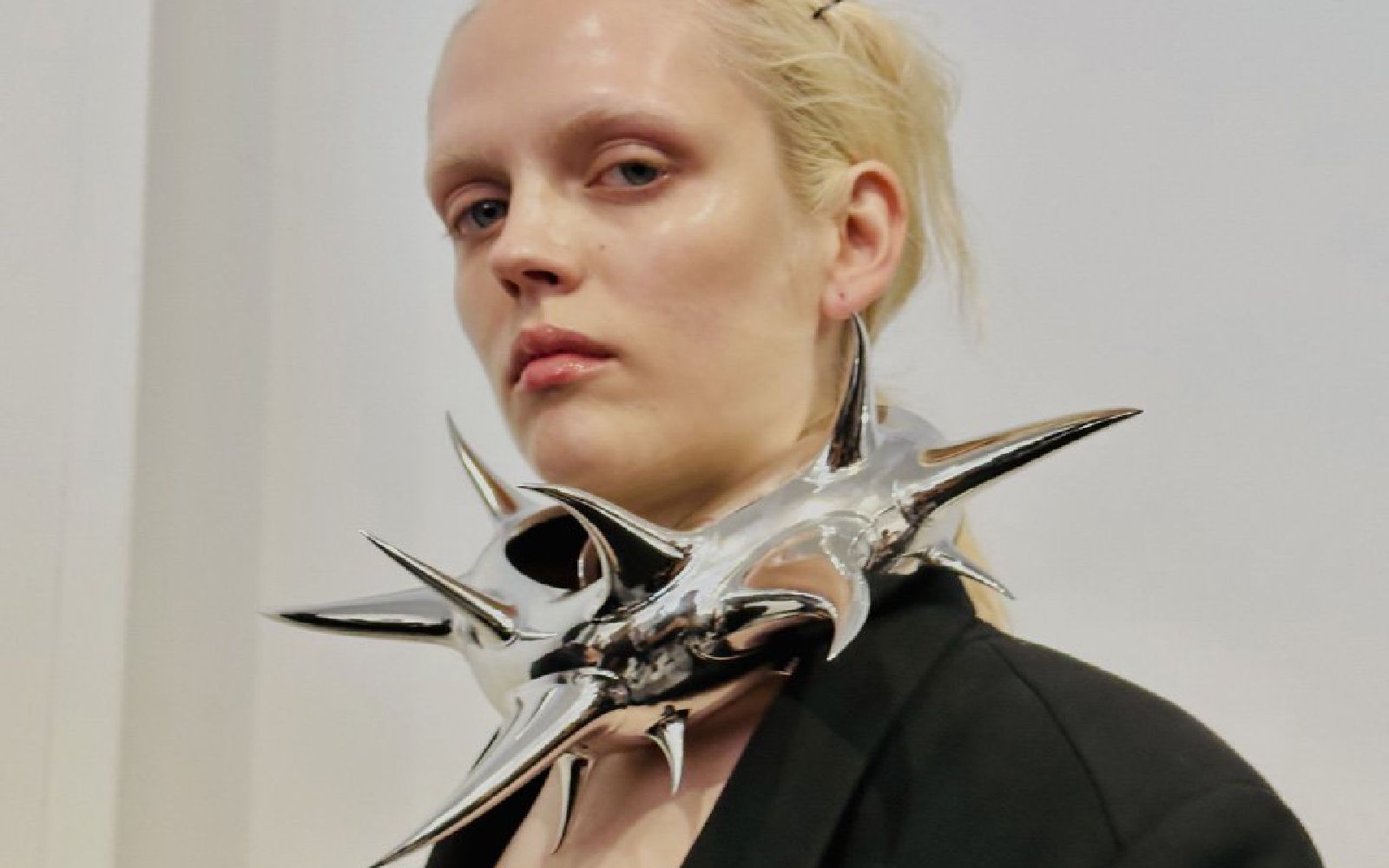Fashion
Fashion’s fascination with Thorns: from music to Fashion Week

«A crown of thorns will be the dress code for my party» sings Angelina Mango in La Noia, the song with which she won the latest Sanremo festival. The pop star from Lagonegro had foresight, as during the recent Fashion Weeks some fashion designers, either clearly or implicitly, were actually inspired by thorns. The fashion industry has always seemed fascinated by this dangerous and controversial organism, which has been depicted, both in sacred and profane contexts, as an element where protection and danger, nature and magic coexist. Even Emma Chamberlain, presenter of this year’s Met Gala with the theme “The Garden of Time”, chose a Jean-Paul Gaultier dress inspired by the lace corset worn by Suzanne Von Aichinger in the 2009 Couture show, Morphing. The dress reproduced tangled branches and thorns climbing up the body of the creator, evoking that sense of uncontrollability and darkness of nature: a gothic garden of climbers reminiscent of the indestructible and bewitched barriers of thorns created by Maleficent in Disney’s live-action, to protect the moor from mortal violence. But Chamberlain and Mango are not the only ones to have referenced thorns in their recent artistic appearances.
The Italian-London duo of the brand Jordanluca, for SS24, through prints with roses, barbed wire, and large jewelry reminiscent of powerful thorny branches, wanted to recreate a sensual atmosphere of danger. The idea of the thorn has in a sense been interpreted in punk, of which Jordan Bowen and Luca Marchetto are contemporary devotees, both with the use of studs and through bold disheveled hairstyles featuring the typical Mohawk, resembling a crest of thorns. In this regard, in JordanLuca’s FW24 presented during the latest Milan Fashion Week, the designer Andres Kronthaler, husband of Vivienne Westwood – the stylist who, first and foremost, made punk a lifestyle – closed the show. In this collection, Kronthaler and the models sported irregular, thorny hairstyles on formal office looks, a styling choice also seen in Versace’s FW24. The symbol of thorns returns embroidered on a long black dress in the latest collection by Stefano Gallici for Ann Demeulemeester: an emblematic sign retrieved from the archives that evokes the brand’s dark and minimal spirit. Additionally, Pierpaolo Piccioli for his latest Valentino titled Le Noir: in creating a new language of black, the designer features thorn-like applications on dresses and skirts. In the same season, Antonio Marras dedicates the show to the Sardinian sovereign Eleonora d’Arborea, incorporating shiny spikes on coats and cardigans that fit well into the enchanted medieval clearing that serves as the show’s backdrop.
Other designers have depicted thorns in a less explicit but no less significant way. This is the case with Sunnei, which in FW24 found a way to make thorns playful by creating necklaces and bags with soft, colorful stingers – or rather tentacles. Glenn Martens from Diesel for FW24 managed to create a thorny effect on denim, frayed and shaped. In the past, thorns have reappeared in fashion, but why have they often been associated with the sacred? The crown of thorns, in particular, is part of the iconography of Catholic art and is an image that has frequently inspired artists and designers. In this sense, the work of Lee Alexander McQueen in collaboration with jewelry creator and sculptor Shaun Leane is of fundamental importance. The artist created true works of art such as the Coil Corset in 1999, to the crowns of thorns made for the unmistakable collection Dante in 1996 and for the controversial show named Golden Shower in 1998, which ended with a murky rain that wet and soiled the white dress of a model crowned with thorns. McQueen was likely fascinated by the dual nature of this species, making thorns a symbol of desecrating perversion that identified his style from his very first collection Jack the Ripper stalks its victims, where, inspired by the Ripper’s story and Victorian culture, he created garments with barbed wire prints, including a coat still exhibited at the Met in New York. In Riccardo Tisci’s aesthetic, particularly in the FW10 men’s show for Givenchy, sacred crowns of thorns return paired with formal white shirts, and in FW16 of Undercover in the form of headpieces made of intertwined laurel leaves and branches. Even today, this symbol of sacrifice and royalty is of interest to art and music: from the emblematic and controversial video Judas by Lady Gaga to the thorn crown by Tiffany worn by Kendrick Lamar on the cover of his album Mr. Morale & The Big Steppers, to the latest shots by David LaChapelle featuring rapper Tedua as a crowned Jesus during the Via Crucis.
Roberto Cavalli (FW2000), Daniel Roseberry from Schiaparelli (Couture 2024), and Shaun Leane himself for McQueen (SS98) interpreted the concept of thorns by creating metal sculptures on the back of dresses, to faithfully reproduce the bones of a spine, perhaps implying that we are internally “made of thorns”. The reference is also linked to the erotic imagery of BDSM: think of the leather whips with handles made of thin pointed studs featured alongside the “Diana Bag” in Gucci’s Aria collection in 2021 under the creative direction of Alessandro Michele, or the spiked chokers and fetish masks made of sharp nails in the house’s FW19. Returning to Angelina Mango, in the latest music video for the single “Melodrama“, the singer wears armor made of three-dimensional thorns, taken directly from the SS24 collection of the brand Annakiki, which in the latest show proposed dresses and crop jackets covered in relief thorns. With so many thorny looks, between Fashion Week and music videos, it becomes clear that fashion’s fascination with the cruelest aspects of nature continues to rage. Perhaps it is a veiled reference to the fears that grip designers’ minds regarding the future, or simply a suggestive image that takes us back in time.










